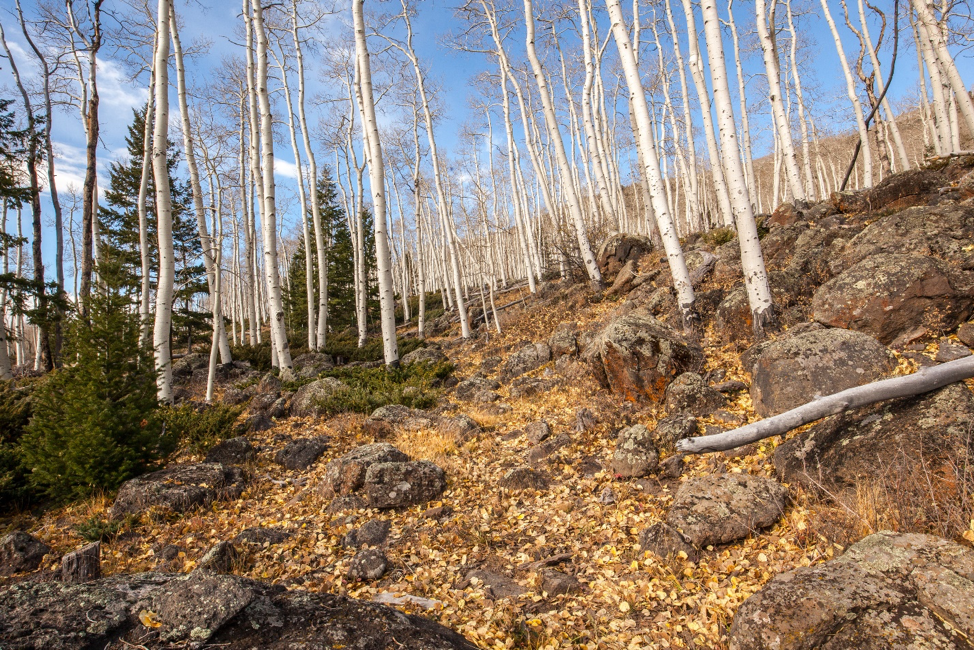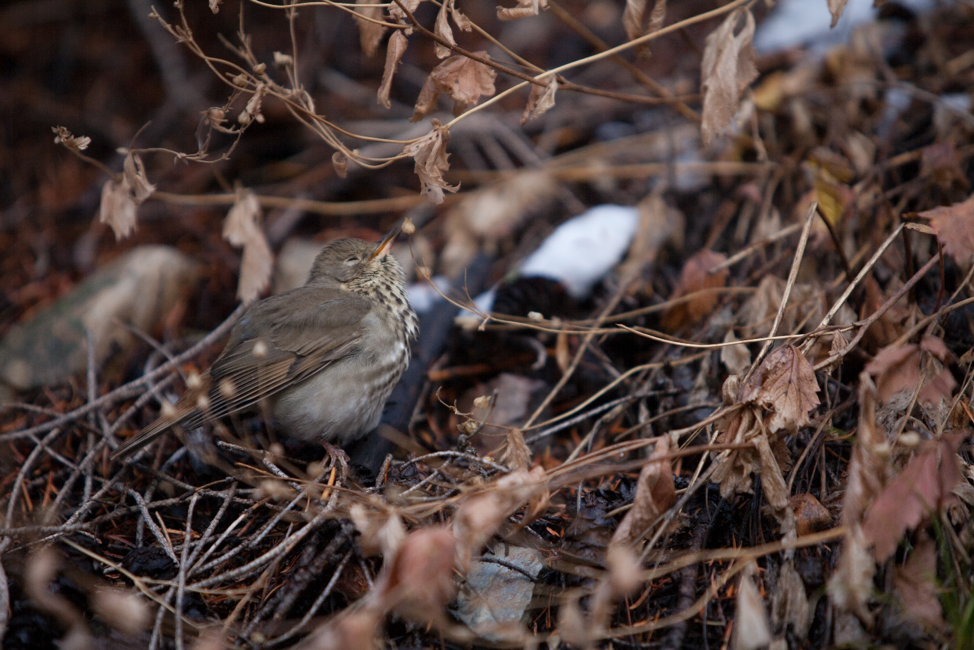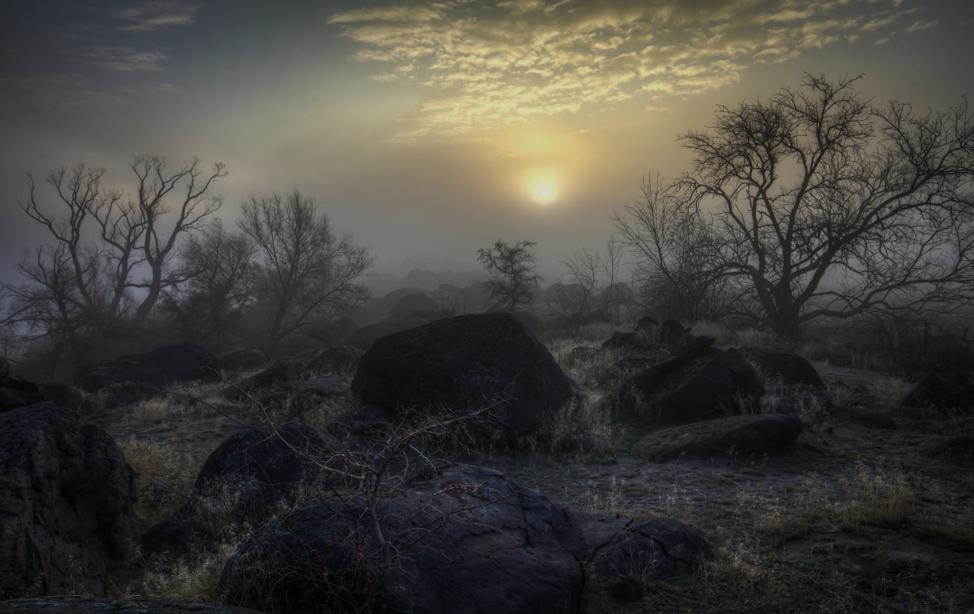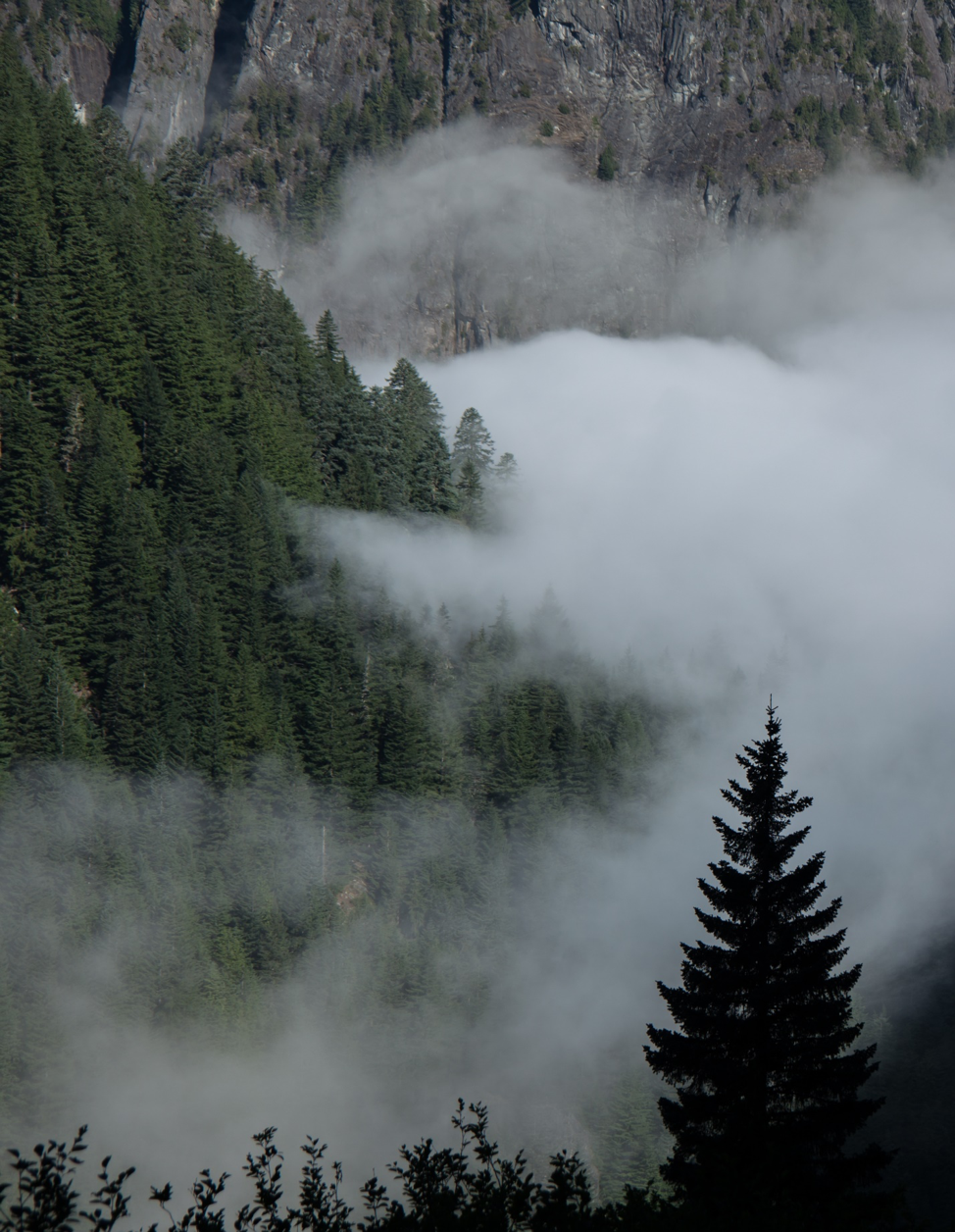
Thinking of a Wild God
Thomas J. Oord
How are we to think of God’s presence in creation? As of someone atop a tower looking down at insignificant creatures in the flow of history? Some theologians talk about God being “high above” us or transcendent. I think instead of God’s omnipresence and pantemporality. The divine perspective feels all creation rather than looking from above. If one thinks, as I do, that God’s work is always loving and therefore always uncontrolling, one might think the health of God’s ecology of love depends, in part, on how we and other organisms respond to God’s influence.
Mount Whitney
I often think about God when experiencing nature in its wilder forms. I’m an avid hiker and backpacker. And I’m a theologian who thinks God is present and active in all creation. Reflecting on God and nature comes naturally to me!
I made this photo from the summit of Mount Whitney, the tallest mountain in the contiguous USA. With an elevation of 14,505 feet (4,421m), the mountain rises at the southern end of the Sierra Nevada Mountains in California.
I hiked to Whitney’s summit one afternoon at the conclusion of several weeks backpacking the 200+mile John Muir Trail. I wanted to make photos of both sunset and sunrise from what seemed like the top of the world.
Light does funny things at high altitude. At least it’s unfamiliar to me. My evening photography brought out the yellow rocks at my feet, which this photograph shows. I was able to see a darker blue sky as I looked at the horizon.
Peering down at birds far below or seeing the airplane roofs brings a strange sensibility. One sees life from an unusual perspective when looking over mountain cliffs. And that unusual perspective prompts me to think about God’s perspective on existence.
God acting in time and space
Some theologians think of God’s perspective like the one we get atop a mountain. They talk about God being “high above” us or transcendent. Some wax eloquent about how insignificant we all must be when viewed from God’s infinite distance.
John Calvin compared a God’s-eye view with the perspective of someone atop a church bell tower. Bell tower eyes see the goings-on below in a single glance. If a parade meanders the streets, the view from on high takes in the parade’s beginning and end.
Taking this analogy in relation to God and time, Calvin thought God sees all history in one eternal now. Such is the advantage of divine infinity. To Calvin and many other theologians, God’s infinite perspective means divine timelessness. God is “outside time,” to use the popular phrase.
When I think of God’s perspective, however, I don’t think about a God who resides outside time and place. Nor do I think of God looking down at insignificant creatures in the flow of history.
I think instead of God’s omnipresence and pantemporality. The divine perspective feels all creation rather than looking from above. To me, God acts with us in time and space. This view of God provokes love and worship in me better than the God beyond and outside time.
Standing atop Mount Whitney reminds me that the Ideal Observer has both the minute and macro perspectives. While God experiences time moment by moment and relates to every entity that exists, God also everlastingly gauges what overall well-being requires, not just what’s good for an individual.
God’s ability to see the big picture and the tiny details is part of what it means for a perfect Being to be worthy of worship.
Pando
Pictured here is a famous grove of trees called “Pando.” The name is Latin for “spread out,” and this grove is a single colony of quaking aspen in Utah (USA). This grove is a single living organism with one massive root system. In fact, Pando is the heaviest known organism on the planet at 6 million kilograms!
My wife and I made the drive to this out-of-the-way and unassuming grove to see the aspens in their fall colors. We arrived a bit late, however, with most of the leaves having already changed color and fallen. As the photo indicates, the earth above Pando’s roots became the canvas for the colors we were seeking.
Pando’s root system has been alive at least 80,000 years, although some think much longer. Changes in the climate are affecting its capacity to survive. Scientists are doing extensive work to see what Pando might tell us about climate change.
The work of ecologists originally alerted me to Pando. A grove of trees supported by a common root system symbolically teaches us about the interrelatedness and interconnectedness of life.
I’ve since become involved with a group called Toward Ecological Civilization. It considers the various domains of life and how we might make changes or preserve ecosystems to affect the whole positively. Toward Ecological Civilization is a think and action tank that works with experts and practitioners to develop a comprehensive roadmap toward sustainability.
God’s ecology of love
I see a link between what Christians call the “kingdom of God” and the ecology of Pando. The Christian phrase in ancient Greek is basileia tou Theou. Many contemporary theologians, however, have suggested that “kingdom” does not express well the wide-ranging work of the Spirit in the world. Some substitute “ecology” for “kingdom.” They argue Jesus Christ points to or announces “the ecology of God.” Or, as I like to call it, “God’s ecology of love.”
I can see advantages and disadvantages of using “ecology” to talk about God’s work in the world. On advantage is that “ecology” suggests that creatures are interrelated to one another and related to God. I like relational language, because it points to causal relationships of existence. What one organism does affects another; what God does affects all organisms; what all organisms do affects God. (Such a view, by the way, rejects the idea that God is impassible in all respects.)
The fate of Pando, with its ancient and intricate root system and its ecological relations, also proves instructive for thinking about God’s work. If one thinks, as I do, that God’s work is always loving and therefore always uncontrolling, one might think the health of God’s ecology of love depends, in part, on how we and other organisms respond to God’s influence. In other words, what we do really counts!
Those with a particular view of God’s sovereignty will recoil at any hint that God’s work could be frustrated. They will doubt that our actions make any ultimate difference to the God whose will cannot be frustrated. My ecology analogy, which places power in actors alongside God, will not attract those who think God can and does control creation.
But to those who see the evil of the world as something God does not want and cannot prevent, the ecology analogy will seem more attractive. The God who cannot control is not culpable for the evil we see. And this God requires our positive participation if the ecology of love is to flourish.
When I’m making photos of creation – whether of Pando or of something else – I see the value of thinking the basileia tou Theou is an ecology of uncontrolling love!
Sparrow
I’ve trained myself as a photographer to look for the dramatic. I typically use my mind’s eye before my actual eyes when composing photos. Photographers sometimes call this “previsualization,” a phrase made popular by the famous photographer of nature, Ansel Adams.
When I photograph nature, I usually try to capture something unusual or beautiful. At the same time, I’m usually trying to making art I appreciate. For dramatic nature photographs, I travel to wild places, expansive vistas, or search for unique creatures. To steal a phrase from real estate agents, the first three rules to consider when buying property are location, location, and location!
Sparrow theology
Walking the streets, alleys, and parks of Chicago recently got me thinking about God and nature anew. I started pondering the divine presence in what is common and familiar. And I started calling this approach to photography, God, and nature, “sparrow theology.”
The words of Jesus are the inspiration for sparrow theology. Two thousand years ago, Jesus asked his listeners, “Are not two sparrows sold for a penny?” He follows this rhetorical question with these words: “Yet not one of them will fall to the ground outside your Father's care” (Mt. 10:29).
Biblical scholars translate the second sentence of the text in various ways. Some talk about the Father knowing of the sparrow’s fall, others about the Father’s will in relation to sparrows, and still others simply say not one sparrow falls “apart from your Father.”
These translations subtly suggest a particular view of God’s relation to sparrows. I suspect the subtle differences influence how we think about God’s relation to the mundane in general and common creatures in particular. Hammering out what this means for divine action, not to mention biblical hermeneutics, would require another essay and more likely a book!
My point here is this: most who believe in God think God is present to all creation. God’s revelation is not just in the immense and dramatic. Nor is it just in the minute and cute. God is present and cares for all.
The divine is present to all creatures
Sparrow theology reminds us of God’s activity in the familiar and the usual. Ordinary creatures and places – including those in the city – bear witness to God’s creativity and care.
I made the photo above after leaving Chicago. On evening standing alongside an Idaho stream, I heard this bird chirping nearby. The sounds persisted for several minutes before I directed my attention to the bird. I was surprised at how friendly it seemed to be. I positioned my camera within 6 feet of it to make this close up photo with my 50mm lens.
What was common and usual – a sparrow chirping and eating seeds – became uncommon and unusual as I focused my attention – and lens – for a close-up photo of an otherwise nervous bird.
Since making this photo, I’ve tried to train myself to attend to the normal, every day, and usual. I want to ponder the presence of the Spirit in all creation. For if what most theologians think is correct, the divine is present to all creatures: great, small, and average.
Idaho Wilderness
When doing public presentations of my photos, I’m sometimes asked which is my favorite. I have thousands of photos I consider high quality, so it’s an impossible question to answer well. It’s like asking a veteran schoolteacher which student was her favorite in her 40 years of teaching!
To compound the complexity of the question, my photography lectures often focus on theology. Pointing to one photo as my favorite also subtly says something about my view of God!
I’ve come to answer the question “Which photo is your favorite?” by pointing to a category of photos rather than just one. The photo above falls in this category.
I made it late one fall day in a wild area of Idaho (USA). Fog covered the landscape that morning, and this photo is taken just as the sun begins to break through.
I love the leave-less trees in this photo; in fact, I think I notice trees more often when barren than fully leafed. The branches of these trees are not symmetrical or aligned to form a uniform skeleton. The shrubs and brush in the photo’s foreground are chaotic too.
Amid the tree skeletons are oddly placed boulders. These rocks settled in this location tens of thousands of years ago during a massive Idaho flood. Their rounded features resemble the rounded features of small pebbles in a stream. But the shaping these boulders underwent came from waters far more powerful than the common stream.
I also like the varying degrees of light in the photo. It’s mostly dark. But light comes through the mist, and we can see a fogless sky even further above. Rays of light reach the soil around the boulders and trees in the photo, providing enough contrast for us to make out shapes.
Thinking of a wild God
All these features in the photo suggest to me a strong streak of wildness. The landscape exists between order and chaos, between day and night, between growth and decline, life and death.
God’s work in the world is wild. God is untamed.
When I think of a wild God, I’m reminded of C.S. Lewis line from The Chronicles of Narnia. The character Peter in the story describes Aslan – the God figure in the book – by saying, “He’s not safe, but he is good.”
The famous American naturalist, John Muir, is known for saying, “In God’s wildness lies the hope of the world.” I agree!
Less known is a spiritual experience Muir describes in what is now called Yosemite National Park in California (USA). Muir writes, “The place seemed holy, where one might hope to see God. So after dark, when camp was at rest, I groped my way back to that altar boulder and passed the night on it – above the water, beneath the leaves and stars – everything still more impressive than by day, the falls seen dimly white, singing Nature’s old love song with solemn enthusiasm, while the stars peering through the leaf roof seemed to join in the white water’s song… Thanks be to God for this immortal gift.”[1]
I suppose my favorite photos point me toward holiness that is partially grasped, partially not grasped, and drawing me toward something more.
Mount Rainier
When I tell people I do “theological photography,” some ask with a smirk, “You take photos pictures of God?!”
Of course, no photo can capture God. We might make an argument that a good photo tells us more truth about God than a good set of words. But I don’t know how one could prove this claim.
Many faith traditions insist God has no form. Some even consider drawings of God blasphemous! Physical objects become idols, say many theistic traditions, if we consider those objects literally divine. While religious icons may direct our thoughts toward God, they are not deities.
Those in the Christian tradition often point to the words of the Apostle John: “No one has ever seen God” (1 Jn. 4:12). This stands in tension with many other biblical passages that speak of seeing God’s backside, walking with God in the garden, etc. But most Christian theologians have said argued these references to seeing God’s body are metaphors not to be taken literally.
On this point, my Mormon friends think different from the mainstream of the Christian tradition. In their view, God has an actual physical body. And God is male. As I see it, it’s difficult to make sense of divine omnipresence when God is said to have a localized physical body.
God is Spirit
I join other theologians in thinking God is a universal spirit without a localized body. Jesus put it simply: “God is spirit” (Jn. 4:24). Theologians often say God is “incorporeal,” which means without a body. Or they say God is “immaterial.” Because God is a universal spirit, God doesn’t have shape, height, and weight like we and other creatures have.
The writers of the Hebrew and Christian scriptures use various words to describe the “stuff” of which God is constituted. Some compare God to breath, a mind, smoke, or the wind. None of these involve a divine body.
In recent centuries, believers have compared God to ether, gravity, soul, light, or oxygen. These words describe God influencing creation without having a localized physical form. While most Christians believe God, as spirit, was specially incarnated in Jesus, they don’t think God exists essentially as a localized, physical figure.
When I make photos in nature, I find myself attracted to photos of smoke, mist, wind, and fog as representations of the incorporeal God. Of course, these photos fall short. It’s impossible to capture in a photo the omnipresent, unseen Soul of the Universe. But something about smoke, mist, wind, and fog hints at a Holy Spirit present and active throughout the cosmos.
I made this photo while hiking the nearly 100-mile Wonderland Trail around Mt. Rainier in Washington State (USA). Between the fog, the sun, and the trees about me, the juxtaposition of shapes and light calmed my spirit on the trail. The words of the Psalmist came to my mind: “Be still, and know that I am God.” And my spirit responded to the Spirit, “let it be so.”
Thomas Jay Oord
Published September 2018
We offer this article also in a German version.
[1] John Muir, “My First Summer in the Sierra” in The Wilderness World of John Muir, Edwin Way Teale, ed. (Mariner Books, 2001 [1911]), 114.
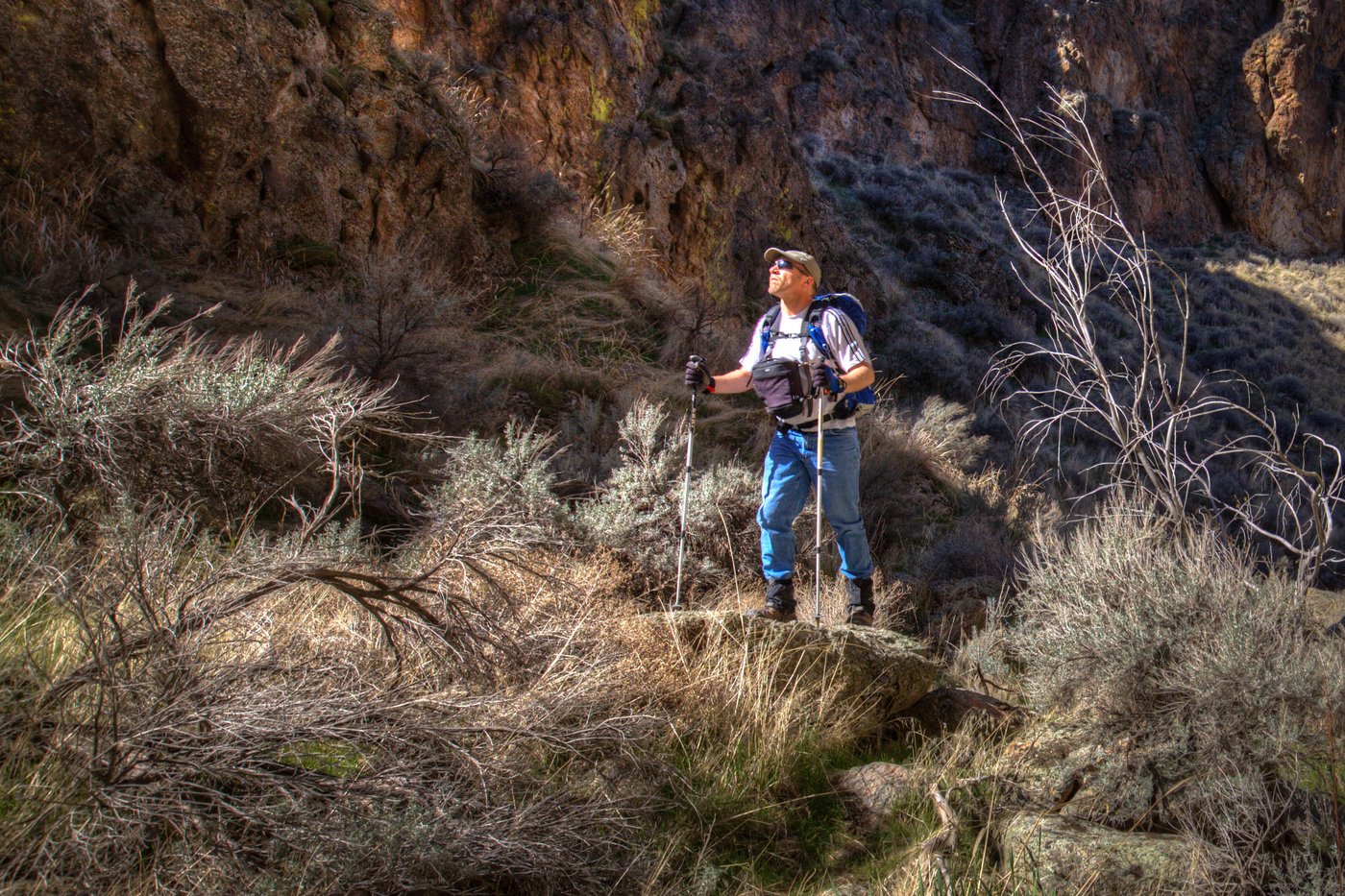
Thomas Jay Oord is a theologian, philosopher, and scholar of multi-disciplinary studies. Oord is an award-winning author, having written or edited more than twenty books. His latest, The Uncontrolling Love of God, was a Reader's Choice winner and best-selling book on three Amazon lists. Oord is also an accomplished photographer and gifted speaker. He is known for contributions to research on love, open and relational theology, science and religion, and the implications of freedom and relationships for transformation.
Picture Credits
©All pictures by Thomas J. Oord

